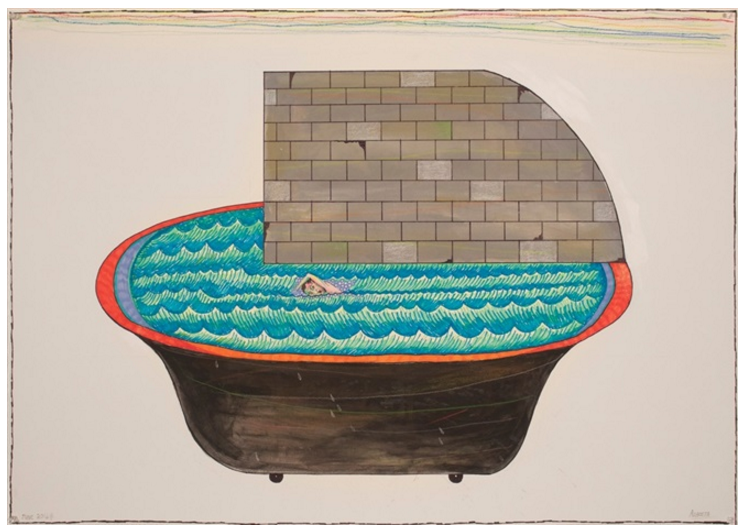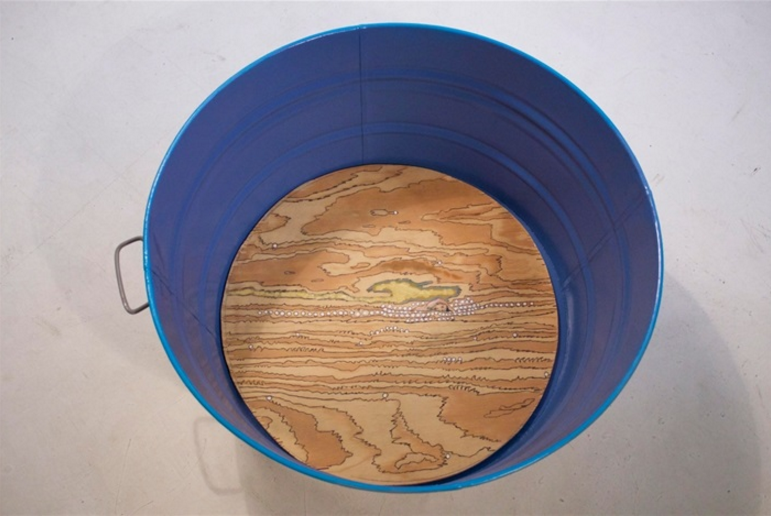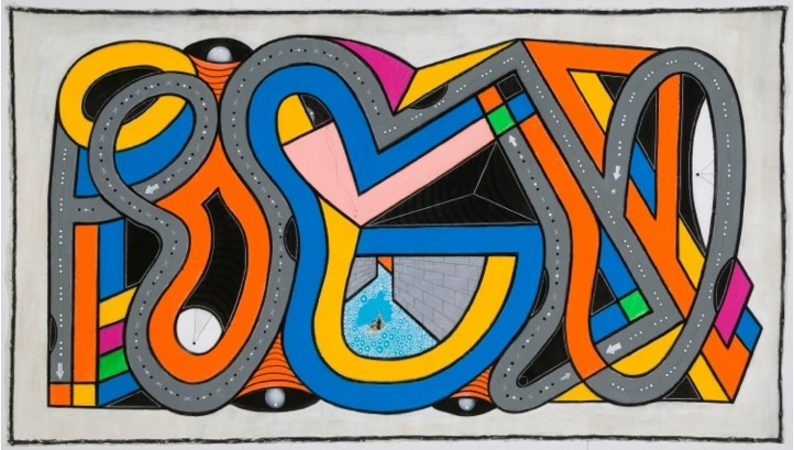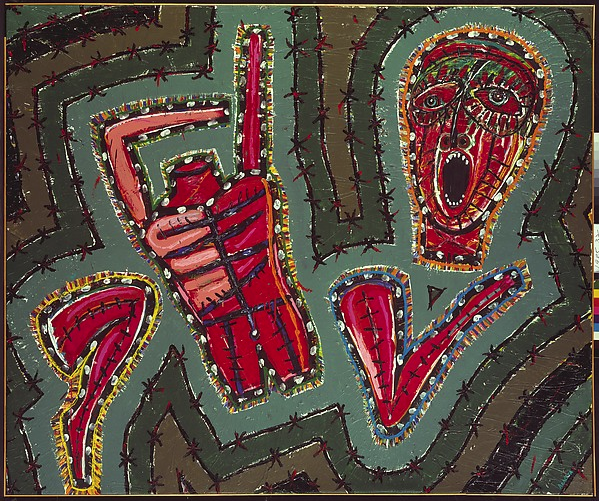Art World
artnet Asks: Artist Luis Cruz Azaceta and Swimming to Havana
This Cuban-American artist is going against the current.

This Cuban-American artist is going against the current.

Artnet Galleries Team

With a career spanning over 40 years and a range of media, Cuban-American artist Luis Cruz Azateco has established himself as a singular voice of his generation. Representing not just special insight into the shifting global narratives of his home country, Azaceta has boldly employed abstraction, figuration, and conceptual practices to explore universal truths about the modern human condition.
His current show is on view at Lyle O. Reitzel Gallery through January 30, 2017 and should not be missed.
Tell us about your current solo show, “Swimming to Havana” at Lyle O. Reitzel Gallery.
Since the Mariel boat lift of 1980, an ongoing subject in my work has been the experience of the balseros, Cubans in make-shift boats and inner tubes to escape their social-political conditions and risking their lives in the crossing.
In 2009, I had the idea to reverse the flow, to do a series entitled Swimming to Havana. Cubans in exile for so many years wanted to go back but could not, and lived the journey through a mental trip. The composition of these paintings and drawings becomes an existential idea. The swimmer continues in an absurd journey enclosed in a labyrinth with no exit. Swimming to nowhere.
Now with the new relationship between Cuba and the United States, the doors are slowly opening as we wait.

Luis Cruz Azaceta,
Basin – Swimming to Havana 3 (2009). Courtesy of Lyle O. Reitzel.
You left Cuba for New York City in 1960. What was the greatest challenge for you as an immigrant? What was the most surprising thing about the city?
The greatest challenge for me as an immigrant was seeing the possibilities for a future. The most surprising thing about the city was the subterranean culture of the subway. I found it to be fascinating and intriguing and drew constantly as I rode the trains. The subway was a social laboratory—the huge diversity of people was very exciting and provocative for me as an artist.
The idea of being in a subterranean state, an underground life of the city with endless stops, tunnels, bridges, and speed was very engaging. Coming from the island of Cuba, I had never experienced anything like it and somehow I think it paralleled this feeling of exile that I carried with me… it was an endless path of limbo.
Can you tell us more about your Subway Series from the 1970s depicting the crowded and shallow spaces of the New York City underground?
In 1974, I began a series of works dealing with the subway—which was the work that opened the door for me with the Allan Frumkin Gallery on 57th Street. At that time I was one of the very few Latins showing in a 57th Street gallery. The subway series were large, unstretched canvases with cut-out attachments depicting the Kafkaesque experiences of riding the trains.

Luis Cruz Azaceta, Swimming to Havana (2009). Courtesy of Lyle O. Reitzel.
After moving to New Orleans you started working with new materials and in larger scale. What is your favorite medium to work in?
Moving to New Orleans also presented another challenge for me as it was again a new environment. In 1993, I was able to acquire a 10,000-square-foot warehouse affectionately known as “the Bunker.” I was able to do large-scale works and have the space to view them.
Like in New York, where the subway was the vehicle for me to understand the city, in New Orleans my camera provided me with familiarity of the environment. I began shooting all the surroundings of the city. What caught my eye was the distressed neighborhoods, where I found poetry within the incongruities of the environment. I loved the range of brilliant color combinations of the small shotgun homes. The materiality of the place called out to me—I began making photo constructions with attachments of broken bricks, metal studs, wires, and other found objects which I found true to the sensibility and environment of the city. It is worn, weathered, and shimmied.
New Orleans allowed me to explore a multitude of materials—everything from crutches, wheelchairs left in the street after Katrina, stuffed animals, metal studs, chicken wire, weathered house boards, cotton, photos, mementos, a number of other objects that magically appeared at my studio door on Tchoupitoulas Street.

Luis Cruz Azaceta, The Dance of Latin America (1983). Courtesy of The Metropolitan Museum of Art.
What has been the highlight of your career or personal life so far?
This moment came when in 1984 when The Metropolitan Museum of Art acquired my painting The Dance of Latin America for their new contemporary art wing and was part of the exhibition “The Age of Anxiety.” Currently my work can be seen in over 80 major museum collections in the United States and abroad. I’ve also been fortunate to receive some major grants along the way, like the Guggenheim Foundation, National Endowment for the Arts Joan Mitchell Grant, and others that were supportive for artists to continue their careers.
A personal highlight in my life was to meet and marry Sharon Jacques, also an artist. Within two weeks of meeting her, I proposed—I actually wanted to propose the first week but figured she might think I was crazy, so I waited another week. We immediately sensed a deep, heart-felt connection when we met back in 1982 which has grown even richer as the years have passed. We have two sons, Emile, from my first marriage, who we raised in NY, and Dylan, who was born in NY and raised in New Orleans and is now a new media artist.
Where were you when you first heard the news of Fidel Castro’s death? What was your initial reaction and how do you feel about it now?
I was asleep and Sharon woke me up to tell me the news. I came down and watched the reports till 3 am. I’m hoping that in time there will be positive changes in Cuba which will open a new chapter in our history.
Do you see yourself ever returning to Cuba now? Would you want to?
Definitely I would like to return to Cuba.
The artnet Gallery Network is a community of the world’s leading galleries offering artworks by today’s most collected artists. Learn more about becoming a member here, or explore our member galleries here.